Introduction: Why Soil Health Matters
Soil is more than just dirt beneath our feet—it's a living ecosystem that sustains plant life. Healthy soil is crucial for thriving gardens and productive agriculture, and it relies on a delicate balance of nutrients, organic matter, and microbial life. While many gardeners turn to chemical fertilizers for quick fixes, these often degrade soil quality over time.
Enter rock dust fertilizer: a natural, mineral-rich solution that rejuvenates soil without harmful side effects. Whether you’re using glacial rock dust, basalt rock dust, or Azomite rock dust, these amendments offer long-term benefits for both plants and the planet.

What Is Rock Dust?
Definition and Function
Rock dust, also known as rock powder or stone dust, is made by grinding down rocks into a fine powder. It serves as a soil amendment that gradually releases essential minerals and trace elements, fostering long-term soil fertility. Rock dust for garden use works differently from synthetic fertilizers—it mimics the natural processes that build soil health over millennia.
Types of Rock Used
The type of rock used determines the mineral profile of the dust:
- Basalt Rock Dust: Derived from volcanic rock, rich in magnesium, iron, and calcium.
- Glacial Rock Dust: Collected from glacial moraine deposits, contains a wide range of minerals from varied rock sources.
- Azomite Rock Dust: A unique deposit found in Utah, containing over 70 trace minerals.

Benefits of Rock Dust Fertilizer
Adds Essential Trace Minerals
Rock dusts for gardens are mineral powerhouses. They contain elements often missing from overworked or depleted soils, including:
- Silicon: Strengthens cell walls, improving disease resistance.
- Iron: Key for chlorophyll production.
- Magnesium: Vital for photosynthesis.
- Calcium: Aids in cell wall formation and root development.
- Potassium: Regulates water balance and flowering.
- Manganese, Cobalt, Zinc, Copper, Boron: Trace elements essential for healthy plant metabolism.
Boosts Soil Structure and Nutrient Retention
Rock dust improves your soil’s cation exchange capacity (CEC), enhancing its ability to retain and exchange nutrients with plant roots. This means your soil holds onto vital elements longer, reducing the need for frequent fertilization.
Encourages Microbial Life
Healthy soil teems with beneficial microbes. Rock dust feeds these organisms by supplying them with necessary minerals, indirectly supporting stronger plant growth. Pair rock dust with microbial boosters like Down to Earth Bio-Live for optimal results.
Balances Soil pH
While not a pH adjuster in itself, rock dust contributes to overall soil balance. It buffers the soil, making nutrients more bioavailable and improving conditions for beneficial organisms.
Learn more about products that boost microbial activity and enhance your soil ecosystem.

Choosing the Right Rock Dust
Compare by Mineral Profile
Each rock dust type brings a unique mineral signature:
- Basalt Rock Dust: Great for crops needing magnesium and silicon. It's a byproduct of basalt mining, making it eco-friendly.
- Glacial Rock Dust: Best for general remineralization; its broad spectrum of minerals supports a wide range of crops.
- Azomite Rock Dust: Offers the most comprehensive trace mineral content. Ideal for revitalizing depleted soils or boosting poor-quality potting mixes.
Refer to research from the University of Maine Extension on using rock dust for organic gardens.
How to Apply Rock Dust
General Application Guidelines
- Garden Beds: Apply 5–10 pounds per 100 square feet of soil. Lightly rake the dust into the top 1–2 inches to help it integrate and begin mineral release. Apply before planting or as a top dressing during the growing season.
- Potted Plants: Mix 1–2 tablespoons of rock dust per gallon of potting mix before planting. For established plants, sprinkle a small amount on the soil surface and water it in gently.
- Trees and Shrubs: Use 1–5 pounds per tree, depending on size. Spread the rock dust evenly around the drip line (the area beneath the outer canopy), then water thoroughly to help minerals soak into the root zone.
- Lawns: Broadcast 30–50 pounds per 1,000 square feet evenly over the area. Water deeply after application to help the minerals settle into the soil. Apply once or twice a year, preferably in spring or fall.
Product-Specific Recommendations
Always check the label, especially for specialized products like:
For additional nutrient needs like sulfur and magnesium, browse Grow Organic’s Sulfur & Magnesium Fertilizer Collection.

Supporting Research and Resources
- UConn Home and Garden Education Center: Explains how rock dust fits into organic lawn care strategies.
- UF/IFAS Extension Orange County: Touches on the use of stone in landscapes.
- Texas A&M AgriLife Extension: Offers comprehensive landscaping guides relevant to soil health.
Conclusion
Incorporating rock dust for garden use is an effective, eco-friendly way to improve soil health. Whether you opt for basalt rock dust, glacial rock dust, or Azomite rock dust, these natural amendments offer slow-releasing nutrients, enhance microbial life, and contribute to long-term fertility.
Used in conjunction with compost, mulch, and organic fertilizers, rock dust fertilizer becomes a cornerstone of sustainable gardening and agriculture.
FAQs: Rock Dust for Plants and Soil Health
-
Is rock dust a good fertilizer?
- Yes, rock dust is an excellent natural fertilizer. It replenishes essential minerals without the risks of nutrient burn, making it ideal for long-term soil health.
-
How to use stone dust for plants?
- Mix stone dust into your garden soil or potting mix before planting. For top dressing, sprinkle around plants and lightly rake into the soil surface. Water thoroughly.
-
How to use volcanic rock dust for plants?
- Volcanic rock dust (like basalt) is best applied at 5–10 lbs per 100 sq ft. You can also blend it into compost to supercharge its nutrient content.
-
Is rock dust worth it?
- Absolutely. While results may not be immediate, over time rock dust significantly improves soil structure, nutrient retention, and plant resilience. It is particularly beneficial for organic and regenerative gardening.
-
How often should I apply rock dust?
- Apply 1–2 times per year for best results, especially in spring and fall. Repeat applications can depend on your soil test results and crop needs.
-
Does rock dust affect pH?
- Rock dust generally helps buffer soil pH but does not drastically raise or lower it. It's more about balancing the overall soil chemistry.
-
Can I use rock dust with compost?
- Yes. Combining rock dust with compost enhances nutrient availability and improves microbial activity.
-
What’s the difference between glacial rock dust and basalt rock dust?
- Glacial rock dust contains a broader range of minerals due to its glacial origins. Basalt rock dust is more focused on silicon, magnesium, and calcium, beneficial for plant structure and stress resistance.
-
Can rock dust improve crop yield?
- Yes. By enhancing soil health and mineral content, rock dust helps increase both the quality and quantity of your harvest.
🌼 Resource Area: Enhancing Blooms & Vegetable Yields
Learn how rock phosphate complements organic fertilization plans for vibrant flowers and abundant vegetables:
- Boost Your Blooms with Organic Fertilizers – Highlights rock phosphate’s role alongside bone meal and kelp for fuller blooms and stronger roots.
- Down to Earth Rock Phosphate (Video) – Demonstrates how to use it for better flower and fruit development in gardens.



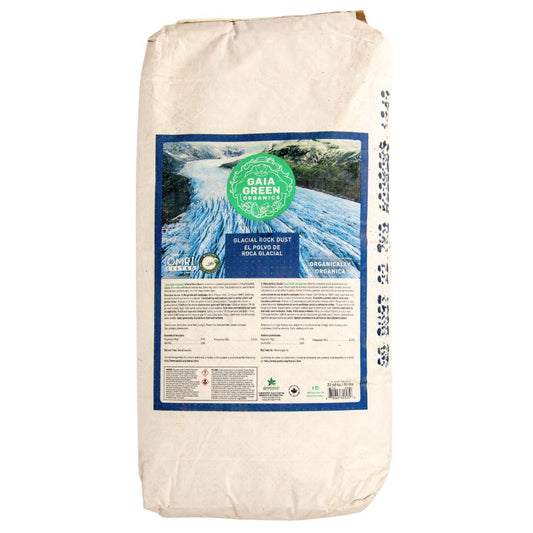
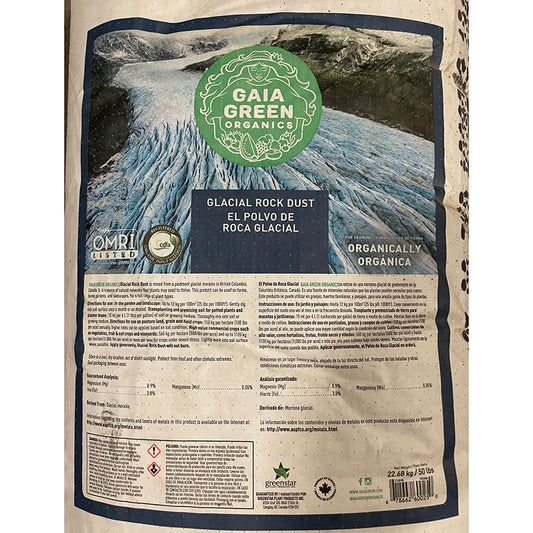
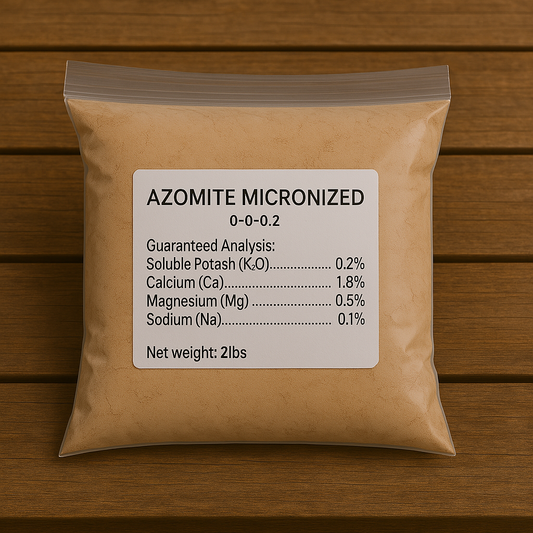
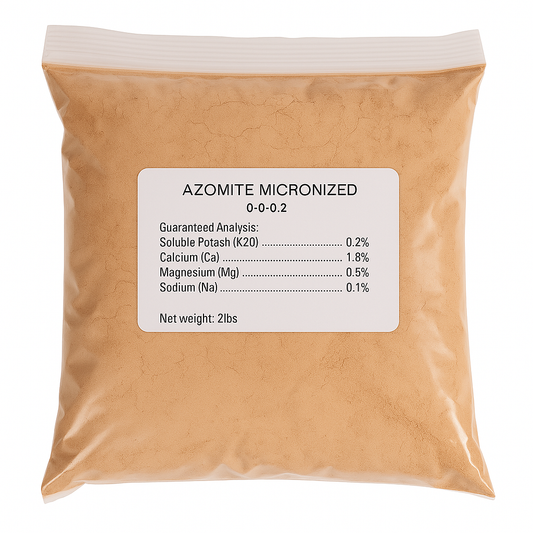
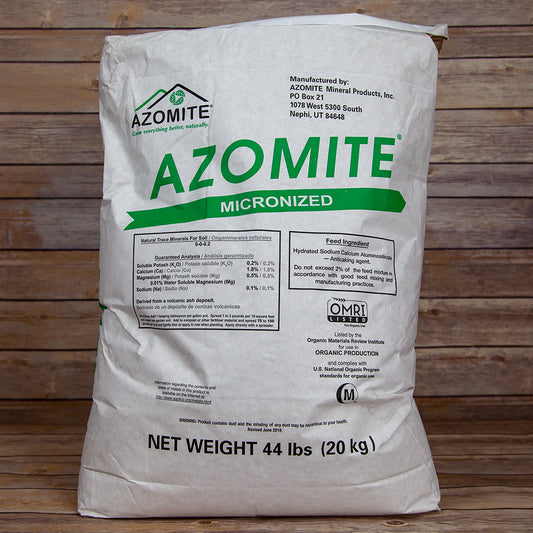
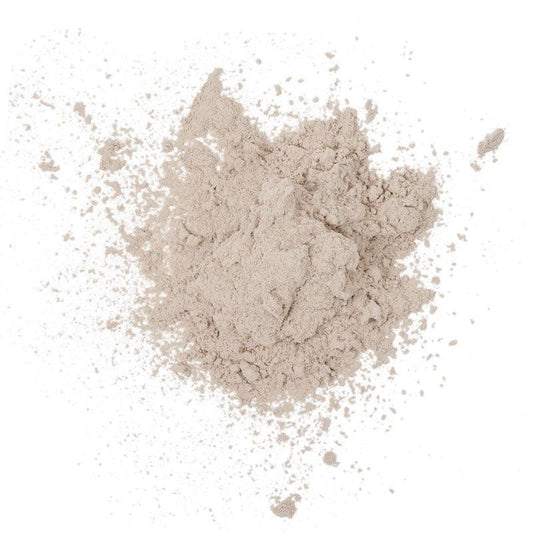
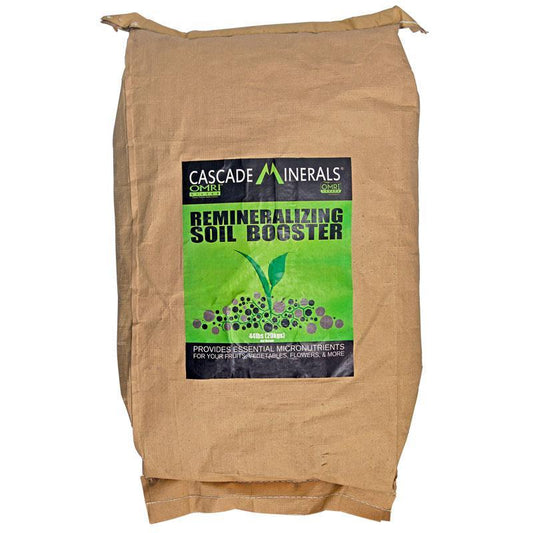
7 comments
Does anyone know of any peer reviewed scientific papers that have been published in regard to the effects of applying mineral dust on soil?
David, you can mix it into the soil and water it in. It is soluble so it will be fine to add it after you have planted.
I’ve been searching for solid information on rock dust. This is great info. Thank you for sharing!
Heavy metal contamination in azomite and glacial rock dust would it be harmful to fruit trees?
This info is so great! Thank you much!